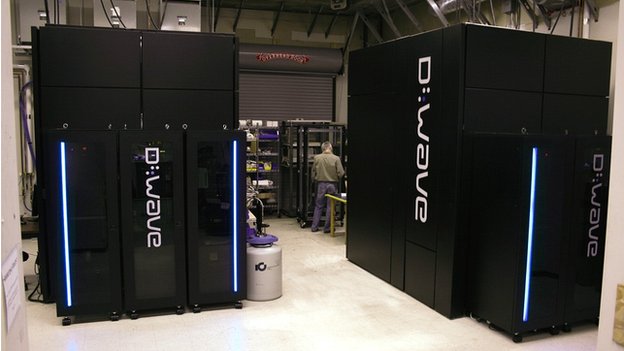ScienceRocks
Democrat all the way!
- Banned
- #1
Silicon chip enables mass-manufacture of quantum technologies
September 4, 2012
Silicon chip enables mass-manufacture of quantum technologies
Example of a silicon quantum chip next to a 20 pence coin.
September 4, 2012
Silicon chip enables mass-manufacture of quantum technologies
Example of a silicon quantum chip next to a 20 pence coin.
(Phys.org)Scientists from the University of Bristol's Centre for Quantum Photonics have developed a silicon chip that will pave the way to the mass-manufacture of miniature quantum chips. The announcement was made at the launch of the 2012 British Science Festival [4 to 9 September].
The leap from using glass-based circuits to silicon-based circuits is significant because fabricating quantum circuits in silicon has the major advantage of being compatible with modern microelectronics. Ultimately this technology could be integrated with conventional microelectronic circuits, and could one day allow the development of hybrid conventional / quantum microprocessors.
The Bristol-led team have developed quantum chips from siliconthe same material routinely used en masse to build the tiny electrical processors in all computers and smart phones. However, unlike conventional silicon chips that work by controlling electrical current, these circuits manipulate single particles of light (photons) to perform calculations. These circuits exploit strange quantum mechanical effects such as superposition (the ability for a particle to be in two places at once) and entanglement (strong correlations between particles that would be nonsensical in our everyday world). The technology developed uses the same manufacturing techniques as conventional microelectronics, and could be economically scaled for mass-manufacture. These new circuits are compatible with existing optical fibre infrastructure and are ready to be deployed directly with the internet.
Mark Thompson, Deputy Director of the Centre for Quantum Photonics in the University's Schools of Physics and Electrical & Electronic Engineering, said: "Using silicon to manipulate light, we have made circuits over 1000 times smaller than current glass-based technologies. It will be possible to mass-produce this kind of chip using standard microelectronic techniques, and the much smaller size means it can be incorporated in to technology and devices that would not previously have been compatible with glass chips.
"This is very much the start of a new field of quantum-engineering, where state-of-the-art micro-chip manufacturing techniques are used to develop new quantum technologies and will eventually realise quantum computers that will help us understand the most complex scientific problems."
Along with recent demonstrations from the Bristol research group and other groups showing on-chip generation of photonics qubits and results from the US showing on-chip detection of single photons, the Bristol-lead research team now believes that all the key components are in place to realise a fully functioning quantum processora powerful type of computer that uses quantum bits (qubits) rather than the conventional bits used in today's computers. Quantum computers will have unprecedented computational power for tasks including search engines and the design of new materials and pharmaceuticals. This work, carried out with collaborators including Heriot-Watt University in Scotland and Delft University in the Netherlands, is an essential step towards the miniaturisations of quantum technologies.



